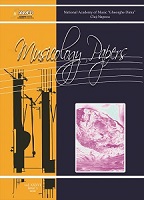Music Therapy – History, Methods and Effects
Music Therapy – History, Methods and Effects
Author(s): Angelica PostuContributor(s): Marcella Magda (Translator)
Subject(s): Psychology, Music, Health and medicine and law
Published by: MediaMusica
Keywords: music therapy; active; receptive; training; improvisation; therapeutic conversation; emotional expression;
Summary/Abstract: Often mentioned and praised in the past by philosophers, the therapeutic effects of music are being proven today by scientific research. Music therapy is an integral part of our daily lives, but practising, interpreting and evaluating it requires complex academic training, including personal development and in-depth theoretical and practical knowledge of music and psychotherapy. The evolution of music therapy and of our understanding of its effects is closely linked to the scientific discoveries of how music acts on the brain and its effects on the body and emotional state. Active or receptive music therapy sessions include singing and listening, musical improvisations with a variety of instruments, as well as therapeutic conversations. Music therapy is not about singing and performance, and it does not judge whether the music is right or wrong; it encourages the external sonic exploration of the instruments, as well as the inner exploration of emotions and reactions. Whether it is about children, who cannot speak yet, or adults, who, due to trauma or mental problems block their verbal and emotional expression, music therapy is the form of therapy that reveals the inner states, making them heard through sounds, songs and rhythms. Patients have the opportunity to train their self-perception and ability to concentrate, self-confidence and its development.
Journal: Lucrări de Muzicologie
- Issue Year: 36/2021
- Issue No: 2
- Page Range: 78-91
- Page Count: 14
- Language: English
- Content File-PDF

